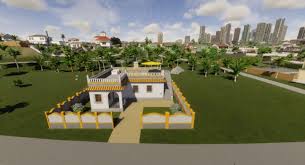Swissquote match analysis: Aston Villa 2-4 Olympiacos

Olympiacos closed in on their first-ever European final with their 4-2 semi-final first-leg victory at UEFA Europa Conference League rivals Aston Villa on Thursday.
In this article brought to you by Swissquote, UEFA match observer Dušan Fitzel, working together with UEFA's performance analysis unit, shines a light on the keys to a famous victory for José Luis Mendilibar's side – starting with their superiority in the centre of the park, allied with an effective pressing game.
Olympiacos's central overloads
The focus of the first video is the "mini-game in the middle" as Fitzel called it – and how Olympiacos were able to win it. It shows their work both with and without the ball, illustrating their success in achieving a numerical advantage in central areas.
Out of possession, Olympiacos were brave in committing numbers upfield to press Villa in the attacking third, as we see in clip one above. They press well and screen the passing lanes into John McGinn and Douglas Luiz, with the narrow wingers, Kostas Fortounis and Daniel Podence, lending support to striker Ayoub El Kaabi and midfielder Chiquinho. "Olympiacos pressed them high with four players," said Fitzel.
It is striking how quickly they get players around McGinn to put him under pressure and force the turnover, which gives them a 5v5 in the final third. On the Greek side's pressing strategy, full-back Omar Richards told UEFA afterwards: "I feel like we had a good plan. We know they like to play through the lines, and we set a good press and we caught them a few times with that and we grew in confidence in the game."
Clip two features another example of them overloading the central areas, with their front four joined by midfielders Vicente Iborra and Santiago Hezze in a compact, narrow shape. It means there are six bodies in the vicinity of Douglas Luiz and McGinn as Matty Cash carries the ball from the back, making it difficult for Villa to play through them. Each player is playing his part: Podence closes down Clement Lenglet, blocking the option of a pass out to the left; Iborra gives McGinn no room when he receives, so prompting the pass back toward Lenglet who goes long. "If you let them play, they will play very, very well so we tried to press as high as we could," said Podence.
The same sequence goes on to show Olympiacos's efforts on the ball and it underlines the key role played by Chiquinho, whose movement between the lines proved a problem for Villa. He gets into space behind Douglas Luiz to collect the pass from Fortounis in an attacking transition by the visiting side. "Chiquinho was so clever, he was moving always between the lines and getting the ball there and helping them to dominate in that attacking area," said Fitzel.
The third clip features the opening goal – and in the build-up we see how Olympiacos again achieved an overload. With only Ollie Watkins and Moussa Diaby pressing for Villa, Olympiacos have a 4v2 as they work the ball from their own half. Then, when the Villa midfield duo do step up, this leaves space behind – and Hezze, the man on the ball, suddenly has three options for a pass, as the arrows indicate.
For Villa it was a problem they could not solve on the night, with Emery admitting to UEFA that in next week's second leg they must "try to control better our positioning".
Olympiacos's precision beats the offside trap
As well as getting numbers forward, Olympiacos caught the eye for their clever movement, with some excellent runs in behind the Villa defence.
This second video provides two examples, the first coming from hat-trick hero Ayoub El Kaabi. The sequence begins with Villa building from the back and once more we see Olympiacos's forwards applying pressure. With numbers already upfield, when the turnover then happens, they have men in dangerous positions: El Kaabi out on the right, Chiquinho in space behind McGinn, and Podence on the left, inside of full-back Cash. It is Podence who takes a step back and, unchallenged, lifts the ball over the back line for El Kaabi who scores.
From an educational perspective, we should highlight first the movement of the centre-forward to beat the offside trap with an 'out to in' run as he cuts across Lucas Digne and then in behind Lenglet to collect the pass and score his second goal. Fitzel explained: "It was the timing of the pass and his run, and the fact he was not running straight but from outside into the penalty area."
Fitzel, a former central defender, also identified the need for a defending team, in this situation, to put more pressure on the player making the pass. "The difference between Olympiacos and Villa was that Olympiacos always put pressure on the player with the ball and Villa were not able to do it. If you have time to have a look and give a good pass, it is always going to be dangerous. You have to keep them under pressure more."
The second clip shows an early attempt on goal by Iborra, with both him and El Kaabi getting into space behind the Villa defence. As Fitzel remarked, we again see Podence with time and space before he plays an angled cross beyond the hesitant back line. What is striking too is the boldness of Olympiacos who, inside the second minute, have five players bombing forward – an early statement of intent.
Villa's penetrative forward passing
If Olympiacos travelled home with a two-goal advantage, Villa certainly had their moments on a night they ended with a superior Expected Goals' total – an xG of 1.43 to Olympiacos's 1.26. "Villa passed the ball well at times and had good movement behind the defensive line," said Fitzel, and the final video below offers several examples of Emery's side playing forward through the central areas.
In clip one, with the Olympiacos midfielders drawn to McGinn and Douglas Luiz, we see Lenglet find Watkins whose cute lay-off gives Villa an opportunity to find space behind the press, bringing a 4v3 for the home side in the central area of the pitch. When the ball is eventually advanced by McGinn, Diaby has room in the centre circle and is able to feed Leon Bailey, offering the option out wide.
For Fitzel, the attacking contribution of this pair was worthy of mention: "The movement of Diaby and of Bailey on the right side was interesting as Diaby had a very good co-operation with Bailey, along with the right-back Cash. They rotated, with Bailey moving inside from the wing and Diaby using the space." For the record, Bailey ended the match with the most take-ons of any player – six (three of them successful).
The second clip provides an even clearer picture of the space that opened up when Villa did manage to get the ball beyond the Olmpiacos press. At this point of the game, around the hour, McGinn and Douglas Luiz are playing slightly wider of each other – meaning one dropping and the other slightly further ahead. And when McGinn turns and plays the pass, he is able to take six Olympiacos players out of the game. Suddenly, Villa have Bailey, Diaby and Morgan Rogers in space, as well as Digne advancing on the left.
Where Olympiacos often played long and sought to win second balls – goalkeeper Kostas Tzolakis's total of 11 passes into the attacking third was the most by any player – Villa continued to construct from deep and the final clip gives an example of them playing successfully through the central areas.
It is worth noting again the positions of their midfield pair – with McGinn slightly ahead of Douglas Luiz. This enables them to combine and, with two line-breaking passes, Watkins is almost through. "This was one of the positive things for Villa – the second or third pass was a final penetrating pass, bringing either a chance for a shot or cross," explained Fitzel. "They were really good at playing fast transitions, though there was sometimes a question mark against the final pass."
For Olympiacos, Villa's ability to play through the lines meant their pressing strategy carried an element of risk. Yet, on the night, the rewards proved far greater, as Mendilibar reflected when asked to sum up their success. "We knew if they got out of that pressure, they would hurt us," he said. "But the second goal, which came from pressing high, gave us strength and spurred us on to keep doing the same."


 United Kingdom
United Kingdom Argentina
Argentina  Australia
Australia  Austria
Austria  Brazil
Brazil  Canada
Canada  Germany
Germany  Ireland
Ireland  Italy
Italy  Malaysia
Malaysia  Mexico
Mexico  New Zealand
New Zealand  Poland
Poland  South Africa
South Africa  United States
United States 
























